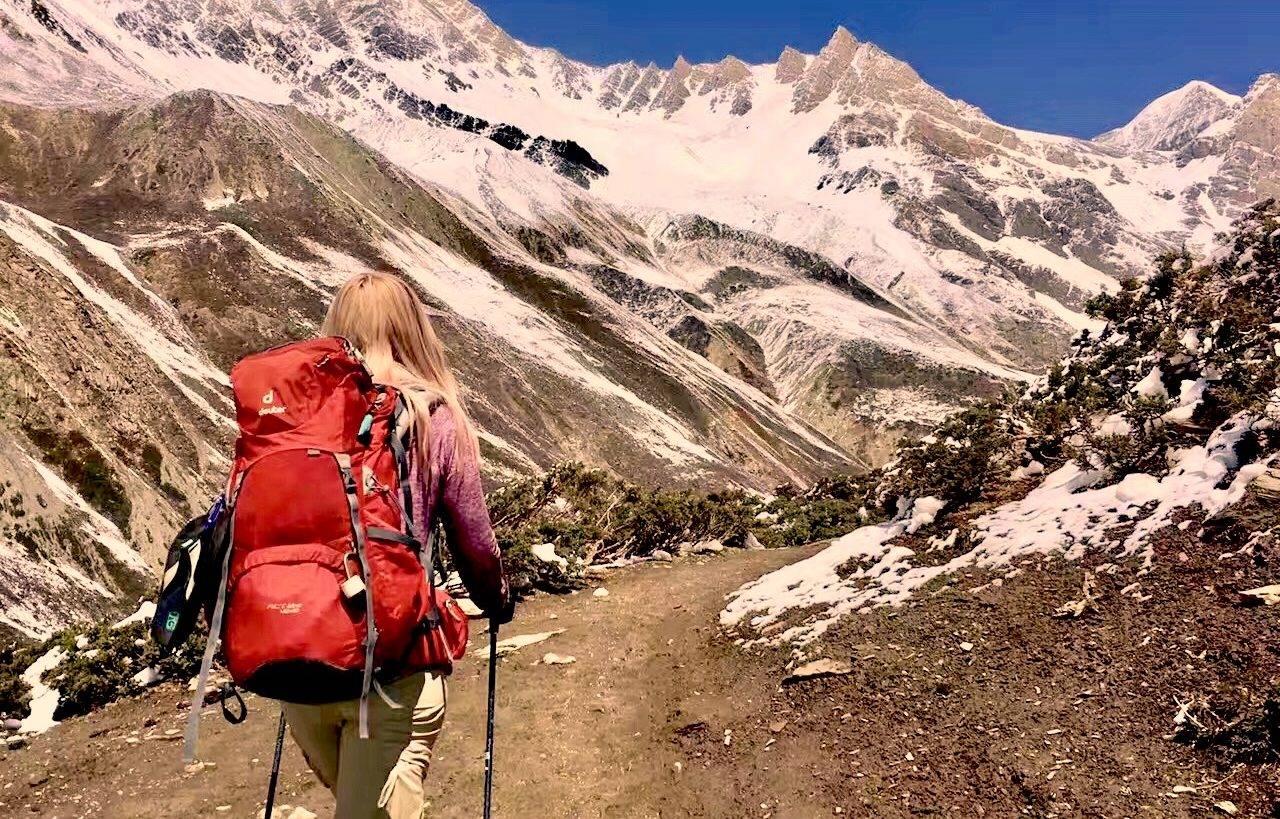
- Duration : 14 Days
- 4.5 Ratings
Annapurna Circuit Trek – 14 Days Trip
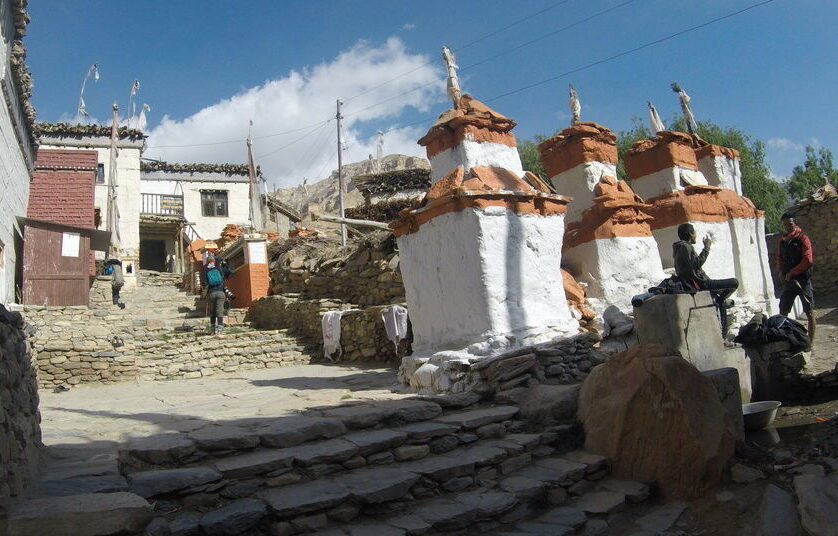
- Duration : 17 Days
- 4.5 Ratings
Upper Mustang Trek – 17 Days trip
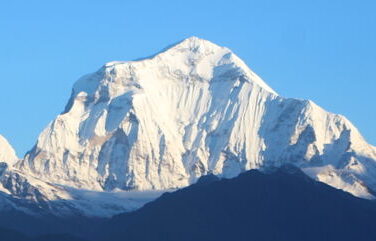
- Duration : 16 Dyas
- 4.5 Ratings
The Annapurna Base Camp (ABC) Trek is a mesmerizing journey that offers trekkers a unique blend of natural beauty, diverse landscapes, and rich cultural experiences in the heart of the Annapurna region of Nepal. Situated amidst the majestic peaks of the Annapurna massif, the ABC Trek is renowned for its breathtaking scenery, including lush rhododendron forests, terraced fields, cascading waterfalls, and panoramic mountain vistas. The journey to Annapurna Base Camp begins from the picturesque town of Pokhara, often referred to as the “Gateway to the Annapurnas,” where trekkers can soak in stunning views of the surrounding Himalayan peaks reflected in the tranquil waters of Fewa Lake. As trekkers venture deeper into the Annapurna Sanctuary, they traverse through traditional Gurung and Magar villages, encountering warm hospitality and rich cultural traditions along the way. Villages like Ghandruk and Chhomrong offer insights into the unique lifestyle and architecture of the local communities, with traditional stone houses adorned with intricate wood carvings and prayer flags fluttering in the mountain breeze.
Annapurna Base Camp is a natural amphitheater surrounded by towering peaks, including Annapurna I (8,091 meters), the tenth highest mountain in the world. As trekkers ascend through the Modi Khola Valley, the landscape transitions from lush forests to alpine meadows, with the snow-capped peaks of the Annapurna range looming ever closer. Reaching Annapurna Base Camp is a moment of triumph and awe, as trekkers are welcomed with panoramic views of the surrounding Himalayan giants, including Machapuchare (Fish Tail), Gangapurna, and Hiunchuli. The serenity and grandeur of the mountain landscape create an unforgettable experience, leaving trekkers humbled by the power and beauty of nature.
The journey back retraces the steps through the picturesque villages and scenic trails, allowing trekkers to savor the memories and reflections of their time in the mountains. Along the way, encounters with local wildlife, including Himalayan thars, langur monkeys, and diverse bird species, add to the enchantment of the trek. The Annapurna Base Camp Trek is suitable for trekkers of all ages and fitness levels, with a moderate level of difficulty. While the trail involves some steep ascents and descents, it is well-marked and maintained, making it accessible to both novice and experienced trekkers alike. Throughout the trek, trekkers are accompanied by experienced guides and porters who provide support, guidance, and insight into the local culture and environment. Tea houses and lodges along the route offer comfortable accommodation and hearty meals, allowing trekkers to refuel and relax after a day on the trail.
The history of exploration in the Annapurna region is a tale woven with daring feats, cultural discoveries, and untold stories of adventure. Long before modern trekking routes were established, indigenous communities traversed the rugged terrain, relying on ancient trade routes to connect with neighboring regions. These early pioneers, guided by local knowledge and tradition, blazed trails through dense forests, high mountain passes, and remote villages, laying the foundation for future exploration.
In the early 20th century, intrepid explorers from around the world began to set their sights on the towering peaks of the Annapurna range. Armed with little more than determination and a spirit of adventure, they embarked on perilous journeys into the unknown, braving harsh climates, treacherous terrain, and formidable obstacles along the way. Their expeditions were fueled by a thirst for discovery, a desire to unlock the mysteries of the Himalayas, and a passion for exploration that knew no bounds.
One of the most notable figures in the history of Annapurna exploration is Maurice Herzog, whose pioneering ascent of Annapurna I in 1950 marked a milestone in mountaineering history. Herzog’s expedition, though fraught with challenges and hardships, succeeded in reaching the summit of Annapurna I, becoming the first team to conquer a peak above 8,000 meters. The expedition’s success captured the imagination of the world, inspiring countless adventurers to follow in their footsteps and explore the remote corners of the Annapurna region.
In the decades that followed, the Annapurna region continued to draw explorers, climbers, and trekkers from all walks of life. As trekking routes became more established and infrastructure improved, the region opened up to a new wave of adventure-seekers, eager to experience the awe-inspiring beauty and cultural richness of the Himalayas. Today, the Annapurna Circuit and Annapurna Base Camp treks rank among the most popular and iconic trekking routes in the world, attracting thousands of visitors each year.
But beyond the thrill of adventure and the challenge of summiting towering peaks, the Annapurna region holds a deeper significance for those who journey through its breathtaking landscapes. It is a place where ancient traditions and modern-day life converge, where trekkers are welcomed with open arms by hospitable villagers and invited to experience the warmth of Nepalese culture firsthand. It is a place where every step tells a story, where the echoes of past explorations resonate in the wind, and where the spirit of adventure lives on in the hearts of all who dare to explore its timeless beauty.
In the Annapurna region, the flora and fauna create a vibrant tapestry of life, adding color and diversity to the landscape. As trekkers traverse the winding trails, they encounter a rich array of plant life, from lush rhododendron forests to towering bamboo groves. Amidst the greenery, vibrant wildflowers bloom in a riot of colors, their delicate petals swaying gently in the mountain breeze.
The Annapurna region is also home to a diverse range of wildlife, including elusive snow leopards, Himalayan thars, and playful langur monkeys. Birdwatchers delight in spotting rare species such as the colorful Himalayan monal and the majestic lammergeier soaring high above the jagged peaks.
In the rivers and streams that crisscross the landscape, freshwater fish dart among the rocks, while amphibians such as frogs and salamanders find refuge in the cool, clear waters. Along the forest floor, small mammals like pikas and marmots scurry about, their furry coats blending seamlessly with the earthy hues of their surroundings.
As night falls and the stars twinkle overhead, nocturnal creatures emerge from their hiding places, filling the air with the sounds of their calls and cries. Owls hoot in the darkness, while bats flit through the night sky in search of insects. In the quiet hours of the night, the Annapurna region comes alive with the sights and sounds of its diverse and vibrant ecosystem, offering a glimpse into the wonders of the natural world.
Embark on an unforgettable journey through the picturesque landscapes of the Annapurna region, starting with your arrival in Kathmandu.
Our trekking adventure officially begins as we journey from Pokhara to Nayapul, the starting point of our trek. From there, we’ll trek through terraced fields and lush forests to reach the quaint Gurung village of Ghandruk. It is also known for its traditional architecture and stunning mountain views. The following days will see us trekking through rhododendron forests and charming villages as we make our way to Chhomrong. A beautiful village nestled in the lap of the Annapurna massif. Continuing our trek, we’ll descend to the Modi Khola River before ascending through bamboo forests to reach Bamboo, where we’ll spend the night surrounded by the natural beauty of the region. The journey continues with a gradual ascent to Deurali, offering breathtaking views of Machapuchare and Hiunchuli along the way. The highlight of our adventure awaits as we trek to the legendary Annapurna Base Camp, surrounded by towering peaks on all sides. After witnessing a mesmerizing sunrise over the Himalayas, we’ll begin our descent back to Bamboo, retracing our steps through the stunning landscapes of the Annapurna Sanctuary.
Our trek concludes with a visit to Jhinu Danda, where we can relax and rejuvenate in natural hot springs before trekking back to Nayapul. From there, we’ll drive back to Pokhara, where you’ll have the rest of the day free to unwind and explore the city at your leisure.
The following day, we’ll either drive or fly back to Kathmandu, where you’ll have the opportunity to do some last-minute shopping or simply relax at your hotel. Finally, our adventure comes to an end as we bid farewell to Kathmandu and depart for our respective destinations, filled with memories of an unforgettable journey through the heart of the Annapurna region.
As the Annapurna Base Camp trek is embarked upon, one is prepared to be mesmerized by the awe-inspiring vistas of the Annapurna massif. Towering giants like Annapurna I, standing at a staggering 8,091 meters, Machapuchare with its distinctive Fish Tail shape, Gangapurna, and Hiunchuli, among others, dominate the skyline. Trekking through the pristine landscapes of the Annapurna Sanctuary offers unparalleled views of these majestic peaks, providing a sense of awe and wonder at the grandeur of nature.
One of the highlights of the Annapurna Base Camp trek is the opportunity to immerse yourself in the rich cultural heritage of the region. As you journey through traditional Gurung and Magar villages like Ghandruk and Chhomrong, you’ll have the chance to discover ancient customs, marvel at traditional architecture, and experience the warm hospitality of the local communities. Interacting with villagers along the trail offers insights into their way of life, creating meaningful cultural exchanges that enrich your trekking experience.
The trek takes you through a diverse array of terrain, each offering its own unique beauty and charm. From lush rhododendron forests, ablaze with vibrant colors during the spring season, to terraced fields cascading down the hillsides, every step presents a new vista to behold. Traversing alongside cascading waterfalls and through verdant alpine meadows, you’ll find yourself surrounded by postcard-perfect scenery at every turn, making the journey as rewarding as the destination.
The pinnacle of your trekking adventure, Annapurna Base Camp awaits at an elevation of 4,130 meters. Nestled within a natural amphitheater, surrounded by towering peaks on all sides, this breathtaking destination offers an unparalleled panorama of the Himalayas. Watching the sunrise and sunset cast hues of gold and pink upon the snow-capped peaks is an unforgettable experience, etching memories into your heart that will last a lifetime.
Beyond the stunning landscapes and cultural experiences, the Annapurna Base Camp trek also offers the chance to encounter a variety of exotic wildlife. Keep your eyes peeled for sightings of Himalayan thars, agile langur monkeys swinging through the trees, and a diverse array of bird species flitting through the canopy above. These wildlife encounters add an element of adventure and excitement to your trekking experience, connecting you more deeply with the natural world around you.
Your adventure begins as you touch down at Tribhuvan International Airport in Kathmandu, Nepal’s vibrant capital. Upon arrival, you’re warmly greeted by our hospitable representative who will assist you to your accommodation. After settling in, take some time to unwind and rejuvenate after your journey. In the evening, convene for an informative pre-trek briefing, where you’ll meet your experienced guide and fellow travelers, discussing the exciting journey ahead. Spend your first night in Kathmandu, soaking in the bustling atmosphere and preparing for the adventures to come.
After a hearty breakfast, embark on a scenic journey from Kathmandu to Pokhara, either by a picturesque drive or a short flight. As you arrive in Pokhara, you’ll be greeted by stunning views of serene lakes and towering mountains, setting the stage for an unforgettable experience. Spend the day exploring Pokhara’s enchanting lakeside, taking leisurely strolls and marveling at the breathtaking vistas of the Annapurna range. Immerse yourself in the tranquil ambiance of Pokhara as you prepare for the trekking expedition ahead.
Begin your trekking adventure with a scenic drive from Pokhara to Nayapul, the starting point of your journey. From Nayapul, embark on a captivating trek, traversing verdant terraced fields and lush forests as you delve into the heart of rural Nepalese life. Arrive at the captivating Gurung village of Ghandruk, renowned for its rich cultural heritage and awe-inspiring mountain panoramas. Spend the night immersed in the charm of Ghandruk, relishing the warm hospitality of the local community.
Set forth on a mesmerizing trek through enchanting rhododendron forests and quaint villages as you make your way to Chhomrong. Ascend gradually, soaking in panoramic views of the majestic Annapurna range unfolding before you. Arrive at Chhomrong, a picturesque village nestled amidst towering peaks, offering a serene setting to unwind and reflect on your journey. Spend the night in the tranquil ambiance of Chhomrong, surrounded by the natural beauty of the Himalayas.
Bid farewell to Chhomrong and descend to the mesmerizing Modi Khola River, crossing it before ascending through verdant bamboo forests to Bamboo. Traverse through dense forests and beside cascading waterfalls, enveloped in the serene beauty of the natural surroundings. Arrive in Bamboo, where you’ll spend the night amidst the tranquil ambiance of the Himalayan wilderness.
Embark on a scenic trek through lush bamboo forests and vibrant rhododendron groves as you journey towards Deurali. Along the way, savor breathtaking vistas of iconic peaks like Machapuchare and Hiunchuli. Arrive at Deurali, a serene mountain haven nestled amidst the grandeur of the Himalayas. Spend the night in the tranquil village of Deurali, surrounded by the pristine beauty of the natural landscape.
Today marks the pinnacle of your adventure as you trek to the legendary Annapurna Base Camp. Ascend through the pristine Annapurna Sanctuary, surrounded by towering peaks on all sides. Reach Annapurna Base Camp, where you’ll be greeted by awe-inspiring views of the surrounding mountains, including the majestic Annapurna I. Spend the night at the iconic Annapurna Base Camp, surrounded by the breathtaking beauty of the Himalayas.
Awake to a spectacular sunrise over the Himalayas before descending to Bamboo. Retrace your steps through the enchanting landscapes of the Annapurna Sanctuary, marveling at the beauty of the mountains from a fresh perspective. As you descend, take in the sights and sounds of the surrounding wilderness, appreciating the tranquility and serenity of the Himalayan landscape. Arrive in Bamboo, where you’ll spend the night amidst the serene surroundings, reminiscing about the unforgettable experiences of your trek.
Commence a rather comfortable trek to Jhinu Danda, where natural hot springs await your arrival. Descend gradually, soaking in the breathtaking vistas of the surrounding hills and valleys. Along the way, pause to admire the beauty of the landscape and capture memorable moments against the backdrop of the majestic Himalayas. Upon reaching Jhinu Danda, take a refreshing dip in the hot springs, allowing the therapeutic waters to rejuvenate your body and soul. Spend the night in the tranquil village of Jhinu Danda, reflecting on the experiences of your journey and savoring the peaceful ambiance of the mountains.
Embark on the final leg of your trek as you journey from Jhinu Danda to Nayapul. Descend through picturesque trails, soaking in the last views of the majestic Himalayas. As you make your way back to Nayapul, take time to appreciate the beauty of the landscape and the sense of accomplishment that comes with completing your trek. Upon reaching Nayapul, bid farewell to the trekking trails and board a scenic drive back to Pokhara. Arrive in Pokhara, where you have the rest of the day to relax and reminisce about your unforgettable adventure amidst the Himalayas. Spend the night in Pokhara, reflecting on the memories of your trek and the beauty of the natural world.
Leaving behind the serene ambiance of Pokhara, travelers embark on a picturesque journey as they traverse the winding roads back to Kathmandu. The drive from Pokhara to Kathmandu offers an immersive experience, showcasing Nepal’s diverse landscapes and cultural richness.As the drive progresses, the bustling streets of Kathmandu gradually come into view, signaling the end of the journey. Yet, the memories of the scenic drive from Pokhara to Kathmandu linger, leaving travelers with a profound appreciation for Nepal’s captivating landscapes and cultural treasures.
As your remarkable Annapurna Base Camp trekking adventure comes to a close, our representative will transfer you to Tribhuvan International Airport for your departure flight. Depart with cherished memories of breathtaking landscapes, warm hospitality, and unforgettable experiences amidst the majestic Himalayas. Until we meet again, farewell and safe travels!
Trekking Gear:
Sleeping Gear:
Backpack:
Clothing:
Personal Hygiene and Toiletries:
First Aid Kit:
Accessories:
Permits:
Permits are essential for embarking on the Annapurna Base Camp trek. All trekkers must obtain the Annapurna Conservation Area Permit (ACAP) and the Trekkers’ Information Management System (TIMS) card. These permits can be conveniently acquired in Kathmandu or Pokhara before commencing the trek.
Accommodation:
Accommodation options along the trekking route include tea houses, providing basic facilities and hearty meals for trekkers. These cozy resting places offer a welcoming respite after a day of trekking.
Duration:
The duration of the trek typically ranges from 7 to 12 days, depending on the chosen starting point and itinerary. The trek is of moderate difficulty level, suitable for both novice and experienced trekkers.
Time to undertake the Annapurna Base Camp
The best time to undertake the Annapurna Base Camp trek is during the spring (March to May) and autumn (September to November) seasons. During these months, trekkers can expect clear skies and moderate temperatures, creating optimal trekking conditions.
Additional information:
Additional information to consider includes the potential risk of altitude sickness, emphasizing the importance of acclimatization days. Trekkers should pack essentials like sturdy trekking boots, warm clothing, and a quality backpack. Hiring a personal porter is advisable if you need additional support with your equipment and baggage throughout the trekking journey.
The Annapurna Base Camp Trek is a popular trekking route in Nepal that takes you to the base camp of the majestic Annapurna mountain range.
The standard duration for the Annapurna Base Camp Trek is 12 days, although it can vary depending on the specific itinerary and trekking pace.
The best time to do the Annapurna Base Camp Trek is during the spring (March to May) and autumn (September to November) seasons when the weather is clear and stable, offering the best mountain views.
Yes, the Annapurna Base Camp Trek is suitable for beginners with a reasonable level of fitness. However, it does involve some steep ascents and descents, so prior trekking experience is beneficial.
While it's not mandatory to hire a guide, it's highly recommended, especially for those without prior trekking experience. Guides provide navigation, safety, and insights into the local culture and environment.
Trekkers need two permits: the Annapurna Conservation Area Permit (ACAP) and the Trekker's Information Management System (TIMS) card. These permits can be obtained in Kathmandu or Pokhara before starting the trek.
The Annapurna Base Camp Trek is considered moderate in difficulty. While it does involve some challenging sections, it is achievable for most people with a reasonable level of fitness and preparation.
Accommodation along the trekking route consists of tea houses or lodges, offering basic amenities such as a bed, blanket, and meals. Rooms may be shared, and facilities vary depending on the altitude.
Most trekking packages include three meals a day (breakfast, lunch, and dinner) along with tea or coffee. Meals typically consist of local dishes such as dal bhat (rice and lentils), noodles, soup, and Tibetan bread.
Yes, bottled water is available for purchase at tea houses along the route. However, it's advisable to bring water purification tablets or a filtration system to reduce plastic waste and ensure safe drinking water.
ATMs and banks are not available along the trekking route. It's advisable to carry enough cash (Nepalese Rupees) for the duration of the trek to cover expenses such as meals, snacks, and additional purchases.
Some tea houses offer charging facilities for a fee, usually using solar power. However, charging options may be limited, and it's advisable to bring a portable power bank for backup.
Mobile phone reception is available in some areas along the route, especially in villages and towns. However, signal strength may vary, and it's not guaranteed in remote areas.
Essential items to pack include clothing suitable for varying weather conditions, trekking boots, a sleeping bag, personal medications, a first aid kit, sunscreen, and a camera. A detailed packing list is provided by most trekking agencies.
Yes, travel insurance that covers high-altitude trekking, medical emergencies, and evacuation is mandatory for the Annapurna Base Camp Trek. Ensure your insurance policy provides adequate coverage for the duration and activities of the trek.
No, our trekking agency does not offer customizable itineraries to suit individual preferences, fitness levels, and time constraints because it is essential to consider factors such as acclimatization and trekking duration.
In case of an emergency, trekking guides and porters are trained to handle medical situations and coordinate evacuations if necessary. Helicopter rescue services are available for evacuations to Kathmandu in severe cases.
Restroom facilities, also known as "tea house toilets," are available at most tea houses along the route. These are basic squat toilets and may require a small fee for use.
Yes, it is possible to trek to Annapurna Base Camp independently, but it's advisable to have prior trekking experience and good navigational skills. Hiring a local guide or porter is recommended for safety and support.
Cultural highlights include visits to Gurung and Magar villages, monasteries, and interactions with local communities to learn about their traditions, customs, and way of life.
Annapurna Base Camp is located at an altitude of approximately 4,130 meters (13,550 feet) above sea level.
Adequate acclimatization is essential to prevent altitude sickness. It's recommended to ascend gradually, stay hydrated, and listen to your body. Diamox (acetazolamide) can be used for altitude sickness prevention under medical guidance.
While there are no strict age restrictions, trekkers should be in good health and have a reasonable level of fitness. It's advisable to consult with a doctor before undertaking the trek, especially for elderly or those with pre-existing medical conditions.
Weather conditions can vary depending on the season. During the spring and autumn seasons, the weather is generally clear and stable, with mild daytime temperatures and cold nights. Winter trekking (December to February) is also possible but colder, with occasional snowfall.
The terrain varies from lush forests and terraced fields to rocky paths and alpine meadows. There are also some steep ascents and descents, especially in the higher altitudes.
Altitude sickness can occur at higher elevations, especially if ascent is too rapid. It's important to acclimatize properly, stay hydrated, and be aware of the symptoms of altitude sickness such as headache, nausea, and fatigue.
Yes, there are optional side trips such as visiting hot springs at Jhinu Danda or exploring nearby villages. However, these may require additional time and should be planned accordingly.
Wildlife commonly spotted along the trekking route includes Himalayan thars, langur monkeys, pheasants, and various bird species. However, sightings may vary depending on the season and location.
Yes, the Annapurna Base Camp Trek is suitable for solo travelers, but it's advisable to trek with a reputable trekking agency or hire a guide for safety and support, especially for first-time trekkers.
If you're unable to complete the trek due to health reasons or other circumstances, trekking guides will assist with arrangements for descent and evacuation if necessary. It's essential to communicate any concerns with your guide as soon as possible



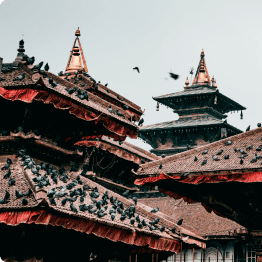
Devraj is the best! could not have asked for a better guide. cool, calm, and collected. you won’t regret it!!
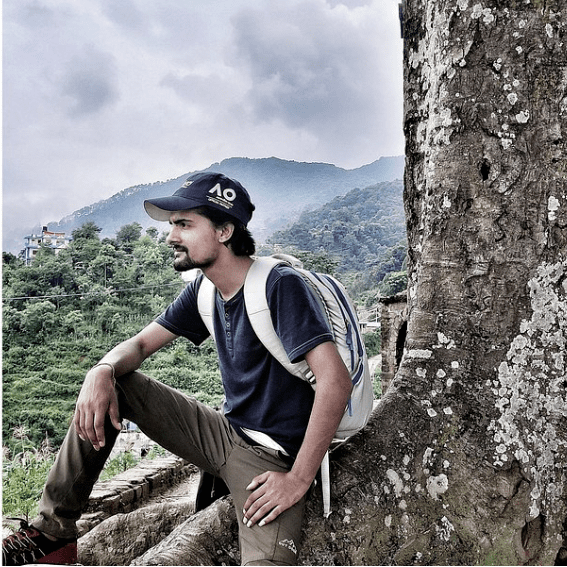
Exciting hiking to the hill of Ichangu Narayan. The flawless environment with prefect hiking condition.
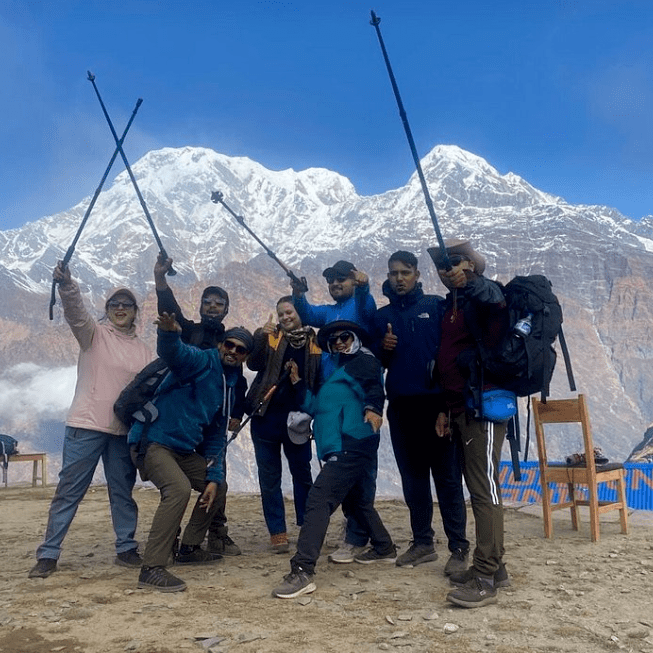
The best trekking agency ever. Guide were very cooperative and supportive.every thing here organized were of good manner.loved my trip to mardi with this team 😊
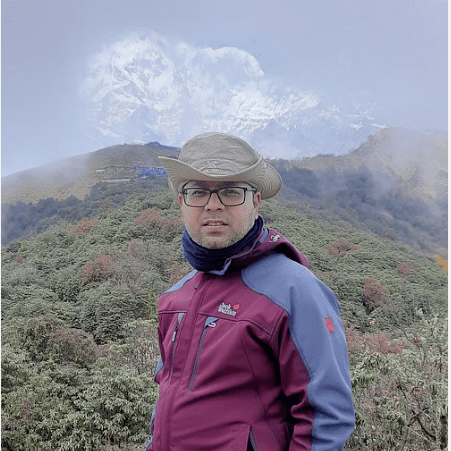
Trip to mardi was great. Amazing guide and strong porter. I felt great watching estonishing view of Machhapuchhre and Mardi himalayas.